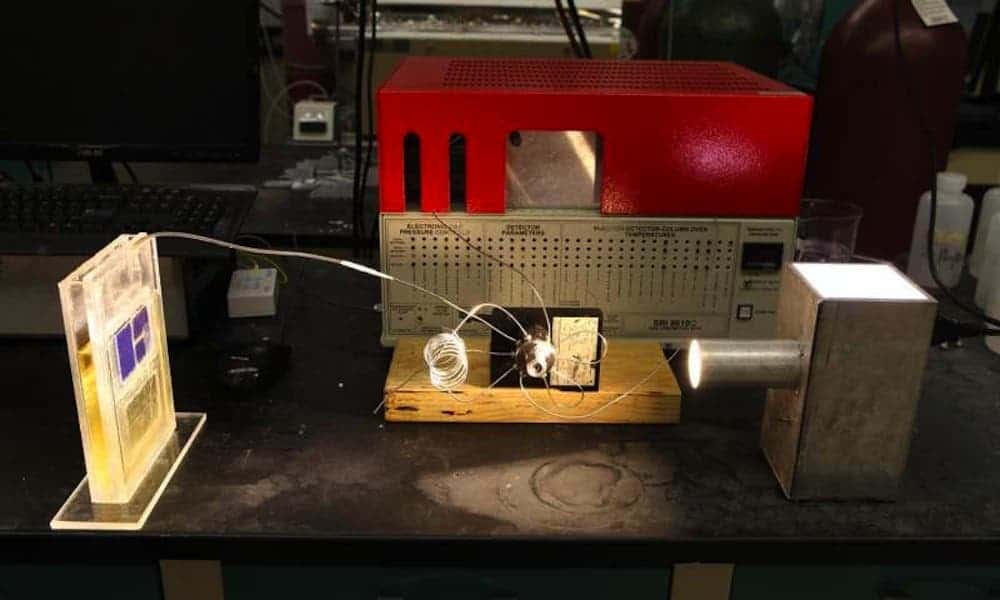A team of researchers from the University of Illinois at Chicago (UIC) has created a photosynthetic solar cell that converts atmospheric carbon dioxide into usable hydrocarbon fuel.

Conventional solar cells convert sunlight into electricity that must be stored in heavy batteries. The new solar cell is potentially game-changing because it converts atmospheric carbon dioxide into fuel, which could not only remove large amounts of carbon from the atmosphere but also create energy-dense fuel.
“The new solar cell is not photovoltaic – it’s photosynthetic,” said Amin Salehi-Khojin, an assistant professor of mechanical and industrial engineering at UIC and senior author of the study. “Instead of producing energy in an unsustainable one-way route from fossil fuels to greenhouse gas, we can now reverse the process and recycle atmospheric carbon into fuel using sunlight.”
If the new solar cell can be taken advantage of on a global scale, it would render fossil fuels obsolete by giving us the ability to turn carbon dioxide into fuel at a cost similar to a gallon of gasoline.
Past studies have failed to find effective catalysts for the conversion of carbon dioxide into burnable forms of carbon. In the current study, Salehi-Khojin and his team focused on using transition metal dichalcogenides (TMDCs) as catalysts, which they paired with an unconventional ionic liquid as the electrolyte. They were then placed inside a two-compartment, three-electrode electrochemical cell.
Of all of the TMDCs that they tried, nanoflake tungsten diselenide turned out to be the ideal catalyst.
“The new catalyst is more active; more able to break carbon dioxide’s chemical bonds,” said Mohammad Asadi of UIC and first author of the paper.
The final solar cell is an artificial leaf that consists of two silicon triple-junction photovoltaic cells that harvest light. On the cathode side is the tungsten diselenide and ionic liquid co-catalyst system, while the anode side possesses cobalt oxide in potassium phosphate electrolyte.
The team hopes that the technology will be able to be adapted not only to large-scale applications such as solar farms, but also small-scale applications.
Journal Reference: Nanostructured transition metal dichalcogenide electrocatalysts for CO2 reduction in ionic liquid. 29 July 2016. 10.1126/science.aaf4767


